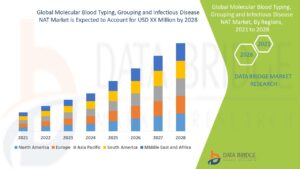MEAN vs MERN vs MEVN – The Difference Explained
Ever wonder why some web apps feel snappy and modern while others lag behind? The difference is in the tech stack powering them. Today, full-stack technology frameworks like MEAN, MERN, and MEVN dominate web app development, offering JavaScript-driven solutions that streamline the web development process. But which one’s right for your project?
To answer this question, it is best to compare MEAN vs MERN vs MEVN for certain parameters that impact the outcome of your web development. Here, we will explore the tech stacks and compare their strengths so that you can select the most appropriate one for your project.
Exploring the Full-Stack Technology Frameworks, MEAN, MERN, and MEVN
What are full-stack JavaScript frameworks? Web development comprises of three components: the frontend, the backend, and the databases. Each aspect of the web is developed using different technologies. Full-stack is a combination of these technologies. So each full-stack will comprise a frontend technology, a backend technology, and a database. The difference in the different full stacks lie in the front-end technology:
| Full Stack Technologies At A Glance | ||||
| Full Stack Framework ⇓ | Database ⇓ | Backend Technology ⇓ | Frontend Technology ⇓ | Runtime ⇓ |
| MEAN | MongoDB | Express.js | Angular | Node.js |
| MERN | MongoDB | Express.js | React | Node.js |
| MEVN | MongoDB | Express.js | Vue | Node.js |
These stacks enable seamless coding by unifying the different web development JS techniques. But how do you understand which full stack is best for you? Yes, partnering with a good web development firm will help you with this selection, but you need to have a basic idea of the popular full stacks. So let’s unpack these JS tech stacks and see what sets them apart.
Breaking Down the Components
Now that we know the technologies powering these different frameworks, let us look at the components before we opt for a MEAN vs MERN vs MEVN comparison.
MongoDB: The Database Backbone
All three JS stacks use MongoDB, a NoSQL database known to store data in JSON-like documents. Its flexibility and schema-less design suits dynamic apps, from e-commerce platforms to social media making MongoDB a consistent strength across all the JS full stacks.
Express.js: The Backend Glue
Express.js is a lightweight Node.js framework much preferred by all popular web development firms in USA. It powers the backend in all three stacks by simplifying APIs and routing, and cutting server setup time by about 30%. Whether handling user requests or integrating third-party services, Express.js keeps the web development technology humming.
Node.js: The Runtime Engine
With Node.js, web developers can run JavaScript outside browsers, resulting in fast, non-blocking backend operations. Its event-driven model is a cornerstone of all three stacks, ensuring modern web development stay lightning fast and fluid.
The Frontend: Where They Diverge
The real MEAN vs MERN vs MEVN debate centers on the frontend. It is the only technology that they differ on.
- Angular, which drives the MEAN frontend, is a robust frontend framework. Its multiple capabilities like two-way data binding for real-time dashboards, make it ideal for complex, enterprise-grade apps.
- React, driving the MERN frontend, is more of a library than a framework. Its virtual DOM and dynamic, component-based UIs help boost performance for interactive apps.
- Vue.js, the MEVN frontend, is a lightweight framework for rapid prototyping. It is a progressive framework that blends Angular’s structure with React’s simplicity.
The front-end technology choice is integral to the success of the web development process. Its profound influence on the speed, scalability, and user experience of the web app makes frontend tech selection critical and challenging.
MEAN vs MERN vs MEVN – The Difference
Knowing the technologies powering the tech stacks will make it easy to understand their pros and cons.
MEAN: The Enterprise Workhorse
MEAN’s Angular frontend suits large-scale apps needing structure. Despite Angular’s steep learning curve, developer surveys conclude that its TypeScript integration reduces bugs by 20%, making it popular with bespoke web development companies. This can slow down onboarding. When choosing MEAN, ask your partnering web development agency to take appropriate measures and overcome this challenge. It is best if you select MEAN for complex systems like ERP or CRM, where stability trumps speed.
MERN: The Speedy Innovator
MERN comes with a React frontend and excels in the debate of MERN vs MEVN for modern web app development because of its flexibility and performance. React’s component reuse and vast ecosystem are ideal for dynamic UIs for e-commerce or social platforms. But React’s library-based nature can lead to inconsistent code if not managed properly. Remember this and pick MERN only for fast, user-centric apps where agility is key.
MEVN: The Nimble Upstart
MEVN boasts of Vue.js as its frontend technology. Hence MEVN is lightweight and approachable, blending Angular’s structure with React’s ease. Vue’s small footprint boosts of superior site load times, making MEVN ideal for MVPs or small-scale apps. However, its smaller community can limit complex integrations. So opt for MEVN only when speed and simplicity outweigh enterprise-scale needs.
| Key Differences at a Glance | |||
| Key Parameters ⇓ | MEAN | MERN | MEVN |
| Performance | Two-way binding suits real-time apps | Virtual DOM allows for rapid UI rendering | Lightweight build excels for smaller projects |
| Scalability | Handles enterprise complexities best | Scales well for dynamic apps | Suits smaller, iterative projects |
| Learning Curve | Complex | Neither simple nor complex | Simple |
| Community Support | Massive | Small | Robust but niche and less than MEAN |
Full Stack framework: Which to Choose When
Go with MEAN If…
Your project demands enterprise-grade structure, like a banking portal or supply chain tool. Angular’s TypeScript and modular design ensure longevity, making it ideal for teams with Angular expertise but less suited for rapid prototyping due to setup time.
Choose MERN If…
You’re building a dynamic, user-focused app, like a streaming service or e-commerce platform. React’s flexibility and performance drive interactive UIs. Hence, it is perfect for startups prioritizing speed and scalability.
Pick MEVN If…
Your goal is a quick MVP or lightweight app, like a portfolio site or SaaS prototype. Vue.js helps accelerate modern web development by 35%. It is best for smaller teams or projects where simplicity trumps complexity.
Challenges and Pitfalls
- MEAN: Angular’s complexity can delay projects. It is robust but resource-heavy.
- MERN: React’s freedom risks messy codebases if ungoverned, resulting in refactoring. Hence, it requires strong oversight.
- MEVN: Vue’s smaller ecosystem limits advanced integrations. It is less suited for complex or large systems.
Mitigate these by aligning the stack with team skills and project scope. A bespoke web development company can tailor solutions to avoid these traps.
Wrapping It Up
Which stack is better, MEAN MERN or MEVN? It depends. MEAN is best for enterprise apps with complex logic. MERN leads for dynamic, user-driven apps, powering 50% of startup launches. MEVN excels in rapid, lightweight builds and is favored by most SMBs. Choosing between MEAN vs MERN vs MEVN shapes your web app development success in 2025. Each full-stack JavaScript framework offers unique strengths: MEAN’s enterprise muscle, MERN’s dynamic speed, MEVN’s nimble simplicity. Modern web development thrives on picking the right JS stack. So, map your goals, test with prototypes, and lean on a web development company to nail your project.











